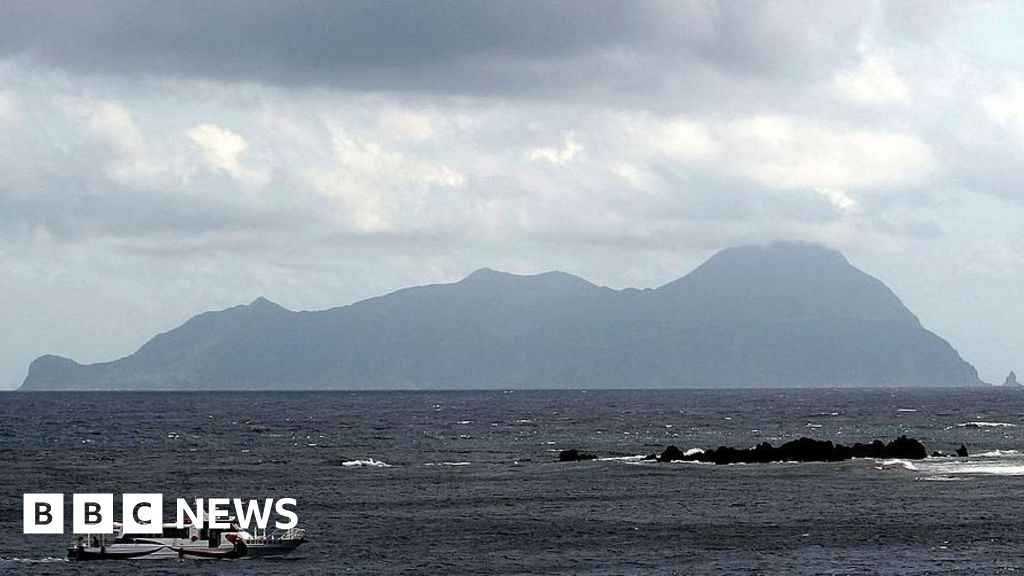More than 900 earthquakes have shaken a remote and sparsely populated island chain in southern Japan over two weeks, keeping residents anxious and awake all night. Seismic activity has been "very active" in the seas around the Tokara islands since 21 June, authorities said after a magnitude 5.5 earthquake struck on Wednesday. There have been no reports of damage and no tsunami warning has been raised but authorities have advised residents to prepare to evacuate if needed. "It's very scary to even fall asleep," one resident told the regional broadcaster MBC. "It feels like it's always shaking." The Tokara area has experienced clusters of earthquakes in the past but the frequency of the most recent tremors has been unusual, according to local media. Japan is one of the most seismically active nations on Earth, owing to its location on the so-called Pacific Ring of Fire, where many tectonic plates meet. It experiences about 1,500 earthquakes each year. About 700 people live on seven of the 12 Tokara islands. There are no hospitals on some of these far-flung islands - the nearest is at least six hours by ferry to the prefectural capital, Kagoshima. "You can hear a strange roar from the ocean before the quakes hit, especially at night. It's eerie," Chizuko Arikawa from Akusekijima island told The Asahi Shimbun. "Everyone's exhausted. We just want it to stop," said the 54-year-old, who lives by the sea and runs a cattle farm with her husband. "After so many quakes, it now feels like the ground is shaking even when it's not," said Isamu Sakamoto, 60, head of the local residents' association in Akusekijima. "The quakes start with a jolt from below, then the house sways. It's sickening," he said. In Toshima village, some residents have been sleep-deprived and tired, authorities said, as they urged the media to stop inundating locals with queries. "We ask that you be considerate and not make excessive inquires or interviews," according to a notice on the village website. Some guesthouses on the Tokara islands have stopped accepting tourists because of the earthquakes, Toshima Village said on its website, noting that they might be used as shelters for locals. This series of tremors come as the country as a whole has been kept on edge by rumours that a massive, deadly quake could soon hit. A 1999 comic book by manga artist Ryo Tatsuki has been fuelling these rumours. In a new edition released in 2021, she claimed the next big earthquake would strike on 5 July this year. These speculations have spooked some tourists, with several media reporting a flurry of trip cancellations. The vast majority of earthquakes that hit Japan are mild, but there are some that cause great damage, like the one in 2011 that triggered a massive tsunami into the north-east coast, killing more than 18,000 people. However, authorities have for decades feared the "big one" - a once-in-a-century megaquake that many had grown up being warned about.Worst-case scenariospredict it could leave more than 300,000 dead. Earlier this week, the government called for new measures, such as constructing embankments and evacuation buildings, to strengthen public readiness in case of such a disaster - but it warned that much more needs to be done.
Japan islanders sleepless after 900 earthquakes in two weeks
TruthLens AI Suggested Headline:
"Residents of Tokara Islands in Japan Endure Anxiety Amidst Surge of Earthquakes"
TruthLens AI Summary
In the past two weeks, the Tokara islands in southern Japan have experienced over 900 earthquakes, causing significant anxiety among the approximately 700 residents spread across the islands. The seismic activity has been particularly intense since June 21, culminating in a notable magnitude 5.5 earthquake. While there have been no reported damages or tsunami warnings, local authorities are urging residents to be prepared for potential evacuations. Residents have expressed their distress, with one individual describing the experience as 'very scary' and noting the constant feeling of shaking. The Tokara islands, known for their sparse population and lack of medical facilities, are particularly vulnerable in the face of such natural disasters, with the nearest hospital located six hours away by ferry in Kagoshima. The frequency of the recent tremors has been unusual compared to past clusters of seismic activity, leading to heightened fears among the residents.
The situation has been exacerbated by public speculation regarding a possible 'big one' earthquake, fueled by a 1999 comic book that predicted a major quake on July 5, 2023. This has led to increased anxiety and a wave of trip cancellations from tourists, further impacting the local economy as some guesthouses have ceased operations to prepare for potential sheltering of residents. Local officials have requested that media refrain from overwhelming the community with inquiries, emphasizing the need for calm amidst the turmoil. The Japanese government is responding to these fears with calls for enhanced disaster preparedness, including the construction of evacuation buildings and embankments, recognizing the necessity of improving public readiness for potential catastrophic events. The ongoing seismic activity serves as a reminder of Japan's position on the Pacific Ring of Fire, where seismic events are a common occurrence, and the need for continuous vigilance in disaster preparedness remains crucial for the safety of its residents.
TruthLens AI Analysis
You need to be a member to generate the AI analysis for this article.
Log In to Generate AnalysisNot a member yet? Register for free.
